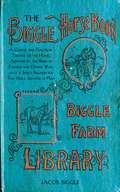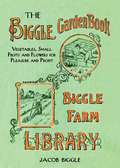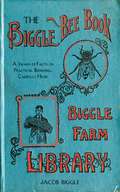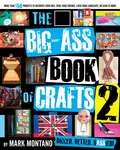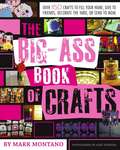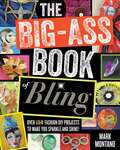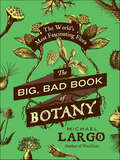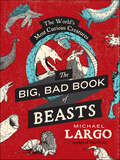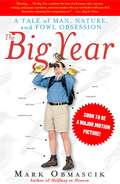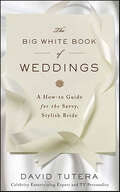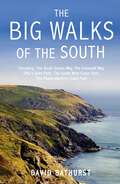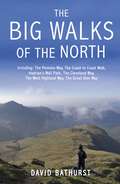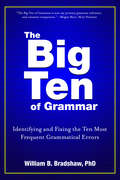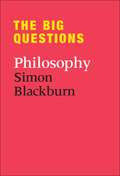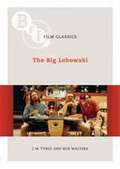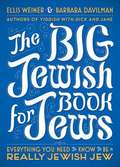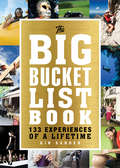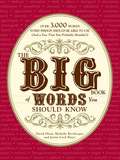- Table View
- List View
The Biggle Horse Book: A Concise and Practical Treatise on the Horse, Adapted to the Needs of Farmers and Others Who Have a Kindly Regard for This Noble Servitor of Man
by Jacob Biggle"People ought to try to make their horses happy," wrote Jacob Biggle's wife Harriet in The Biggle Horse Book in 1894. "A happy, cheerful horse will do more work and live longer, and thus be more profitable to its owner, than one whose temper is kept constantly ruffled, whose disposition is soured by ill-usage, and whose peace of mind is often disturbed by the crack of the whip, the hoarse voice of the driver, the strain of overwork, the discomfort of a hard bed, or the pangs of hunger and thirst." When it comes to the treatment of animals--especially the horse--the Biggles were ahead of their time.Folksy and informative, this manual offers timeless tips on the effective and humane treatment and training of horses and detailed descriptions of all the major breeds. Practical horsemen and veterinarians of the era contributed their wisdom and insight, and their maxims on owning, riding, and working with horses will provide endless hours of entertainment. Here are just a few:"Proper food and lots of sentiment will make with good blood a good horse.""If you must put frosty bits in some mouths, let it be your own. Suffering begets sympathy.""The three greatest enemies of the horse are idleness, fat, and a dumb blacksmith.""Don't try to fit a horse to the collar. It won't work. Fit the collar to the horse."Enhanced with beautiful engravings, illustrations, and snippets of poetry throughout, The Biggle Horse Book remains a loving and fitting tribute to "this noble servitor of man."
The Biggle Garden Book: Vegetables, Small Fruits and Flowers for Pleasure and Profit (Gardening In America Ser.)
by Jacob BiggleWhen The Biggle Garden Book was first published in 1908, most people were in the habit of raising their own food and flowers. Jacob Biggle felt that a gardener's success had to do with willpower and passion rather than acreage. "The man, woman or youngster who really wants a garden, will somehow manage to have a good one regardless of soil conditions, bad weather, measles in the family, or whether the area of ground at hand is a square acre or a square rod," he wrote encouragingly at the start of the book.That passion for gardening continues today in fields, backyards, and urban community plots across the United States. According to a poll taken in 2009 by the National Gardening Association, more than forty-three million households in the United States grow some of their own food. Learn how to do things the "old-school" way as Jacob and Harriet Biggle guide you through the fundamentals of:Soil preparation, sowing, and plantingHotbeds and cold framesFertilization, cultivation, and irrigationFlower gardening with old-fashioned favoritesGarden pests and friendsWith a resurgence in organic farming, heirloom varieties, and self-reliant living, The Biggle Garden Book is more valuable than ever because of the time-tested advice it offers.
The Biggle Bee Book: A Swarm of Facts on Practical Beekeeping, Carefully Hived
by Jacob Biggle"As long as I can remember, even as a boy, there were bees kept on our farm," wrote Jacob Biggle in his preface to The Biggle Bee Book. "If for no other reason than to insure the proper fertilization of fruit and other blossoms, every farmer, fruit grower, or gardener should keep a few bees upon his grounds." Biggle's fifty colonies of bees, though requiring just a small part of his time, paid Biggle a larger return than any other animal on his farm. Not only did he take pleasure in caring for these wonderful insects and enjoying the honey they produced, he also recognized that their presence on his farm meant that his orchards and crops would flourish.If there are any so-called secrets to the art of beekeeping, Jacob Biggle does his best to expose them all in this delightful little volume. His hope was that readers could profit from his hard-earned wisdom that included:The benefits of keeping beesHow to care for bees through the winterThe marketing and selling of wax- and honey-based productsWhat bee-friendly plants to raise in the gardenHow to introduce a new queen to the hiveWritten not only for the professional beekeeper, but also for the backyard farmer, and anyone interested in rural life, self-sufficiency, and farming techniques of the past, this book is an essential addition to the home library.
The Big-Ass Book of Crafts 2
by Mark MontanoSearching for crafty inspiration? Eager to try some new techniques? Need some more junk for your trunk? Well, look no further! In this cheeky sequel, Mark Montano picks up where his wildly popular The Big-Ass Book of Crafts left off, with even more spectacular--and easy-to-make--projects sure to satisfy crafters of all skill levels. Turn colorful ribbons into a show-stopping scarf . . . transform old cargo pants into a kick-ass carryall . . . a high-drama neckpiece made out of zippers? Absolutely. Along with a host of other wearable wonders, this exciting all-new volume includes sections such as Pillow Talk (fun, comfy, and made from the most surprising materials), Letter Perfect (cool designs to pop into the mailbox nearest you), Hey, I Could Use That (make a big statement with little things from magnets to nail polish), Just Kid-ding (cheery dÉcor made from kid-centric stuff, guaranteed to make you smile!), That's Shoe Biz (fun fixes that give sidelined footwear and handbags a whole new life), and dozens of other ideas that are inventive, imaginative, and just plain fun. With his trademark humor and no-holds-barred approach to crafting, Mark will have you tapping into your creative soul and taking simple techniques to a whole new level in no time. We're not talking plant-hangers and potholders here--the more than 150 handmade projects in this truly unique compendium are artistic, eye-catching, and cutting-edge, from cool brooches and earrings to ingenious belts and bags, from Bauhaus-style furniture to fishbowl lanterns, and so much more!
The Big-Ass Book of Crafts
by Auxy Espinoza Mark MontanoThe Big-Ass Book of Crafts is packed with ideas for sprucing up your living space; concocting fabulous, all-natural body products; designing your own unique stationery; and creating countless other crafts that will convince your friends and loved ones that you're the secret love child of Martha Stewart (only much, much cooler). Forget crocheted doilies and itchy knit sweaters -- TLC's While You Were Out top designer Mark Montano has created stylish and imaginative projects that range from a Warhol-esque Ultrasuede iPod case to photo-adorned boxer shorts to African mask patio chairs to wooden night-light boxes. Divided into sections that include Outdoorsy (ideas to enhance your backyard), Dishing It Out (decorating plates using different techniques), You've Been Framed (innovative picture framing ideas), and Can I Have a Light? (creating and decorating lamps, lanterns, and chandeliers), it's as entertaining to read as it is endlessly inspiring. With more than one hundred and fifty inventive and fun projects, The Big-Ass Book of Crafts is the perfect activity book for readers of every mood, budget, and skill level.
The Big-Ass Book of Bling
by Mark MontanoA fun, flashy, and sASSy book for beginner and expert crafters alike--with more than 150 new projects that will add pizzazz to everything from jewelry to tote bags!BLINGY, BLINGIER, BLINGIEST! DO YOU WANT A DESIGNER LOOK THAT IS ALL YOURS-- AND TO EXPRESS YOUR CREATIVITY AND HAVE SOME FUN? All that glitters doesn't have to be gold . . . and diamonds (even the fake ones!) can be a girl's-- or a boy's--best friend. With Mark Montano's step-by-step guidance you, too, can let loose your inner fashionista and make fabulous, unique accessories to complement your entire wardrobe! Think outside the box when it comes to materials, and check through your recycling to find treasures In the Bin. Show people your New Mexico style, and make a papier-mâché Zigzag Turquoise Cuff out of newspaper. When the plastic store bags start crawling out from under the sink, tame them with a Fused Plastic Flower Cuff. Make the tree-mendous Nature's Bling Bag decorated with branches sliced thin. Or Twine Not try the hardware store for some colored twine--and pick up some aluminum flashing to find out why Tin Is "In"? From punk to retro, from bobby pins to safety pins, with more than 150 projects there's something for everyone, whether you want to glam it up Hollywood-style or go ultra-sophisticated like a newly crowned princess.
The Big, Bad Book of Botany: The World's Most Fascinating Flora
by Michael LargoDavid Attenborough meets Lemony Snicket in The Big Bad Book of Botany, Michael Largo’s entertaining and enlightening one-of-a-kind compendium of the world’s most amazing and bizarre plants, their history, and their lore.The Big, Bad Book of Botany introduces a world of wild, wonderful, and weird plants. Some are so rare, they were once more valuable than gold. Some found in ancient mythology hold magical abilities, including the power to turn a person to stone. Others have been used by assassins to kill kings, and sorcerers to revive the dead. Here, too, is vegetation with astonishing properties to cure and heal, many of which have long since been lost with the advent of modern medicine.Organized alphabetically, The Big, Bad Book of Botany combines the latest in biological information with bizarre facts about the plant kingdom’s oddest members, including a species that is more poisonous than a cobra and a prehistoric plant that actually “walked.” Largo takes you through the history of vegetables and fruits and their astonishing agricultural evolution. Throughout, he reveals astonishing facts, from where the world’s first tree grew to whether plants are telepathic.Featuring more than 150 photographs and illustrations, The Big, Bad Book of Botany is a fascinating, fun A-to-Z encyclopedia for all ages that will transform the way we look at the natural world.
The Big, Bad Book of Beasts: The World's Most Curious Creatures
by Michael LargoThe world's wildest collection of animal knowledge and lore!Lions, and tigers, and bears . . . and dinosaurs, dragons, and monsters. Oh my!For hundreds of years, the most popular books in the Western world next to the Bible were "bestiaries," fanciful encyclopedias collecting all of human knowledge and mythology about the animal kingdom. In these pages, eagles and elephants lived next to griffins and sea monsters. Now, in The Big, Bad Book of Beasts, award-winning author Michael Largo has updated the medieval bestsellers for the twenty-first century, illuminating little-known facts, astonishing secrets, and bizarre superstitions about the beasts that inhabit our world—and haunt our imaginations. You'll learn about the biggest bug ever, the smallest animal in the world, and the real creatures that inspired the fabled unicorns. You'll discover how birds learned to fly, why cats rub against your legs, and a thousand other facts that will make you look at nature in a wonderfully new way.Did you know?The fastest animal in the world is the peregrine falcon, which reaches speeds of over 200 miles per hours.Circus ringmaster P.T. Barnum fooled many when he displayed a "mermaid" carcass that was later proved to be monkey bones sewed together with the body of a fish.Discovered in a remote volcanic crater in New Guinea, the Bosavi wolly rat grows to the size of a cat.President Andrew Jackson bought an African gray parrot to keep his wife company. The bird outlived them both and was removed from Jackson's funeral for cussing in both English and Spanish.A to Z: From Aardvark to Zooplankton!For all ages!Includes 289 illustrations!
The Big Year: A Tale of Man, Nature, and Fowl Obsession
by Mark ObmascikEvery year on January 1, a quirky crowd of adventurers storms out across North America for a spectacularly competitive event called a Big Year -- a grand, grueling, expensive, and occasionally vicious, "extreme" 365-day marathon of birdwatching. For three men in particular, 1998 would be a whirlwind, a winner-takes-nothing battle for a new North American birding record. In frenetic pilgrimages for once-in-a-lifetime rarities that can make or break their lead, the birders race each other from Del Rio, Texas, in search of the rufous-capped warbler, to Gibsons, British Columbia, on a quest for Xantus's hummingbird, to Cape May, New Jersey, seeking the offshore great skua. Bouncing from coast to coast on their potholed road to glory, they brave broiling deserts, roiling oceans, bug-infested swamps, a charge by a disgruntled mountain lion, and some of the lumpiest motel mattresses known to man. The unprecedented year of beat-the-clock adventures ultimately leads one man to a new record -- one so gigantic that it is unlikely ever to be bested...finding and identifying an extraordinary 745 different species by official year-end count. Prize-winning journalist Mark Obmascik creates a rollicking, dazzling narrative of the 275,000-mile odyssey of these three obsessives as they fight to the finish to claim the title in the greatest -- or maybe the worst -- birding contest of all time. With an engaging, unflappably wry humor, Obmascik memorializes their wild and crazy exploits and, along the way, interweaves an entertaining smattering of science about birds and their own strange behavior with a brief history of other bird-men and -women; turns out even Audubon pushed himself beyond the brink when he was chasing and painting the birds of America. A captivating tour of human and avian nature, passion and paranoia, honor and deceit, fear and loathing, The Big Year shows the lengths to which people will go to pursue their dreams, to conquer and categorize -- no matter how low the stakes. This is a lark of a read for anyone with birds on the brain -- or not.
The Big White Book of Weddings: A How-to Guide for the Savvy, Stylish Bride
by David TuteraEntertaining expert David Tutera opens his files to reveal a wealth of detailed information about creating that perfect day, featuring advice about everything from wording invitations to negotiating with caterers, planning the meal to throwing an event on a budget.The same insight celebrity entertaining and wedding expert David Tutera gives to his A-list clientele is now at your fingertips in The Big White Book of Weddings: David's ultimate "how-to" guide designed to get every bride down the aisle in style!It's tough to be a bride on a budget—but David reveals his personal tips of the wedding trade that proves brides can be both sophisticatedly chic and realistically resourceful! Covering the entire wedding experience from brainstorming, budgeting, invitations, gift registries, food, music, traditional reception rituals, and even what happens after the wedding's over, Tutera has created a must-have for brides-to-be. Full of the personality that David brings to every wedding he plans and every TV show or magazine article he appears in, Big White Book of Weddings is the book every bride needs to make her wedding unforgettable for all the right reasons!Includes sections such as:- Create engaging menus and creative cocktails in "Eat, Drink and Be Married!"- Be Perfectly Polished with "Etiquette for the Elegant"- Make your entertainment a hit without needing a rock-star budget in "Strike up the Band"- Go from "Ordinary to Extraordinary" with decor and floral tips from the pro
The Big Walks of the South
by David BathurstDavid Bathurst has unlaced his boots to produce this definitive companion to the ten best-loved long-distance footpaths in the south of Britain, with each split into manageable sections. Combining detailed descriptions with an appreciation of the beauty and history of the British countryside, this in an indispensable guide for all walkers.
The Big Walks of the South
by David BathurstDavid Bathurst has unlaced his boots to produce this definitive companion to the ten best-loved long-distance footpaths in the south of Britain, with each split into manageable sections. Combining detailed descriptions with an appreciation of the beauty and history of the British countryside, this in an indispensable guide for all walkers.
The Big Walks of the North
by David BathurstDavid Bathurst has unlaced his boots to produce this definitive companion to the ten best-loved long-distance footpaths in the north of Britain, with each split into manageable sections. Combining detailed descriptions with an appreciation of the beauty and history of the British countryside, this in an indispensable guide for all walkers.
The Big Walks of the North
by David BathurstDavid Bathurst has unlaced his boots to produce this definitive companion to the ten best-loved long-distance footpaths in the north of Britain, with each split into manageable sections. Combining detailed descriptions with an appreciation of the beauty and history of the British countryside, this in an indispensable guide for all walkers.
The Big Walks of Great Britain
by David BathurstAn indefatigable walker, David Bathurst has unlaced his boots to produce this invaluable companion to the fifteen best-loved long-distance footpaths of Great Britain. His appreciation of the British countryside and light-hearted style will appeal to novice and experienced walkers alike.
The Big Walks of Great Britain
by David BathurstAn indefatigable walker, David Bathurst has unlaced his boots to produce this invaluable companion to the fifteen best-loved long-distance footpaths of Great Britain. His appreciation of the British countryside and light-hearted style will appeal to novice and experienced walkers alike.
The Big Trivia Quiz Book
by DKPut your general knowledge to the test, and impress your family and friends with your astonishing brainpower and trivia genius.An addictive quiz book for all the family featuring 10,000 questions, The Big Quiz Book has something for everyone. With 10 different general knowledge categories - from Science & Technology, Art & Literature, and Natural History, to Food & Drink, Film & TV, and Sport & Leisure - and three increasing levels of difficulty, it offers a fresh and up-to-the-minute quizzing experience that will educate and entertain all the family. Bursting with fascinating facts to boost your trivia knowledge, whatever your specialist subject or your nemesis topic, The Big Quiz Book is perfect for home entertainment and virtual pub quizzes. You won't be able to put it down!
The Big Ten of Grammar: Identifying and Fixing the Ten Most Frequent Grammatical Errors
by William BradshawHave you ever hesitated when choosing between "I" or "me"? Have you had trouble figuring out tricky pronouns like "who" or "whom"? What about those always-troublesome commas–do they go before or after the quotation marks?If you're anything like the rest of us, you struggle with these age-old grammatical issues. In this practical and easy-to-understand handbook, Dr. William B. Bradshaw identifies the ten most common errors in English grammar and helps you to recognize and correct these mistakes, enabling you to write and speak with greater clarity in your personal and professional life. The Big Ten of Grammar is the perfect guide for students, teachers, and professionals to use in brushing up on their grammar.
The Big Questions: Physics
by Michael BrooksThe Big Questions series is designed to let renowned experts address the 20 most fundamental and frequently asked questions of a major branch of science or philosophy. Each 3000-word essay simply and concisely examines a question that has eternally perplexed enquiring minds, and provides answers from history's great thinkers. This ambitious project is a unique distillation of humanity's best ideas. In Big Questions: Physics, Michael Brooks answers the 20 key questions: What is the point of physics? Is everything ultimately random? What is time? Why is there no such thing as a free lunch? What happened to Schrödinger's cat? Can I change the universe with a single glance? Are solids really solid? Which is nature's strongest force? Why does an apple fall? Do we live in a computer simulation? What is light? Is Earth's magnetic shield failing? Am I unique in the universe? Does chaos theory spell disaster? Can we travel through time? Is string theory really about strings? Why does E=mc2? What is the God Particle? Why is there something rather than nothing? What is the ultimate nature of reality?
The Big Questions: Philosophy
by Simon BlackburnBestselling author Simon Blackburn tackles the key questions in philosophy--and provides easy-to-understand and enlightening answers.In Big Questions: Philosophy, bestselling author Simon Blackburn addresses the 20 essential questions:What is the meaning of life? Am I free? Why is there something and not nothing? What do we really know? Is there such a thing as society? Can machines think? What is time? How can I deceive myself? Why be good? What fills up space? Can we truly understand each other? Why do things keep on keeping on? Are we rational? What am I? What are my rights? Is truth relative? Do we need God? What is human nature? What is beauty? Is death to be feared?
The Big Lebowski (Bfi Film Classics Ser.)
by J. M. Tyree Ben Walters<P>Since its release nearly ten years ago, The Big Lebowski has become a cult classic with a worldwide following, having survived the baffled reaction of many mainstream critics.<P> Its fans tend to be fanatical, congregating at 'Lebowski Conventions' in bowling alleys across American and Britain, and even dressing up as characters from the film. <P>Among the funniest films of the last twenty-five years, and one of the high-water marks of 1990s genre recycling and pastiche, The Big Lebowski also littered with playful and subversive references to film history, especially to Raymond Chandler's world of hardboiled detective classics and the world of film noir.<P> The Big Lebowskiis the rarest kind of film, a comedy whose jokes become funnier with repetition. The same goes for its multitudinous jukebox-like references to other films, many of which open up vistas for intertextual interpretation.<P> Underneath the film's breakneck pacing and foul-mouthed characters, a farcical collection of flakes, losers, and phonies, is a surprisingly humane account of what fools we mortals be. <P>It is one of the oddest buddy films ever made, with extraordinary performances by Jeff Bridges and John Goodman.<P> In this study, The Big Lebowskiis set into the context of 1990s Hollywood cinema, anatomised for its witty relationship with the classics which it satirises, and discussed in terms of its key theme: the hopeless flailing of ridiculously unmanly men in the world of discombobulated, mixed-up, or put-on identities that is Los Angeles.
The Big Jewish Book for Jews
by Ellis Barbara Weiner DavilmanA hilarious compendium of traditional wisdom, recipes, and lore from the authors of the bestselling Yiddish with Dick and Jane. Modern Jews have forgotten cherished traditions and become, sadly, all- too assimilated. It's enough to make you meshugeneh. Today's Jews need to relearn the old ways so that cultural identity means something other than laughing knowingly at Curb Your Enthusiasm- and The Big Jewish Book for Jews is here to help. This wise and wise-cracking fully-illustrated book offers invaluable instruction on everything from how to sacrifice a lamb unto the lord to the rules of Mahjong. Jews of all ages and backgrounds will welcome the opportunity to be the Jewiest Jew of all, and reconnect to ancestors going all the way back to Moses and a time when God was the only GPS a Jew needed. Watch a Video
The Big Bucket List Book
by Gin SanderEveryone has a daunting "bucket list" of things to complete before they die. The problem? We spend too much time creating lists of what we want to achieve instead of just doing it. The Big Bucket List Book will transform the way you look at the world and the power you have to achieve your dreams. In this charming and practical collection, Gin Sander offers over 130 fresh ideas for infusing your life with a bit of glamor, adventure, and style for every budget and adventure level, including: Staying in a castle to channel your inner romantic (did we mention you could do it for free?) Joining a bike race in Tuscany or giving back with a humanitarian mission in Africa Taking a songwriting class as the next Joni Mitchell or Jack White Eating pie (need we say more?) It's time to stop listing, and start living! With this book in hand, you can make your next chapter the most enriching and personally fulfilling of them all...and maybe change the world while you're at it.
The Big Book of Words You Should Know: Over 3,000 Words Every Person Should be Able to Use (And a few that you probably shouldn't)
by David Olsen Justin Cord Hayes Michelle BevilacquaDo you know what "quatrefoil" and "impolitic" mean? What about "halcyon" or "narcolepsy"?This book is a handy, easy-to-read reference guide to the proper parlance for any situation. In this book you will find: Words You Absolutely Should Know (covert, exonerate, perimeter); Words You Should Know But Probably Don't (dour, incendiary, scintilla); Words Most People Don't Know (schlimazel, thaumaturgy, epergne); Words You Should Know to Sound Overeducated (ad infinitum, nugatory, garrulity); Words You Probably Shouldn't Know (priapic, damnatory, labia majora); and more.Whether writing an essay, studying for a test, or trying to impress friends, family, and fellow cocktail party guests with their prolixity, you will achieve magniloquence, ebullience, and flights of rhetorical brilliance.
The Big Book of UFO Facts, Figures & Truth: A Comprehensive Examination
by William J. Birnes Stephen SpignesiIn a mothership full of entertaining and informative chapters, authors Stephen Spignesi and William Birnes, writers of many books dealing with the intriguing, weird, and unexplained, shed a revealing beam of light on the UFO phenomenon. From inexplicable cattle mutilations and modern astronauts who have seen UFOs, to close encounters of the third and fourth kind, and, it’s all here: The latest on Roswell, and the 1947 crash that has never been explainedThe weirdest (and most convincing) alien abductions—and the medical procedures performed on abducteesThe most commonly-seen UFO shapesA who's who of UFOlogy—including presidents that have seen UFOsUFOs and the Bible20 years of Project Blue Book mysteries—NASA’s official UFO investigationWeirdness galore—Men in Black, crop circles, Bigfoot, the face on Mars, Hollow Earth Theory, alien ancestry, and more!The Big Book of UFO Facts, Figures & Truth is at once a valuable reference and an engrossing guide for all those fascinated with unexplained phenomenon. Turning to any page at random, readers are sure to find new facts and information, as well as dozens of rare, irrefutable photos. In addition, readers will learn how they can access a special website which includes actual video evidence of UFOs. This just may be the most comprehensive UFO guide available.
